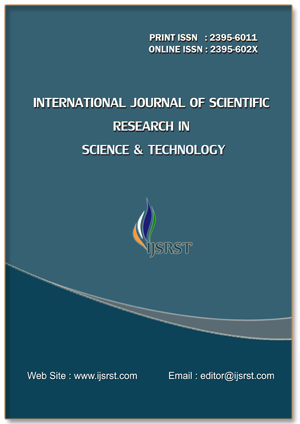A Comparative Analysis of Ensemble and Deep Learning Architectures for Millet Yield Prediction
DOI:
https://doi.org/10.32628/IJSRST251222665Keywords:
Millet yield prediction, South India, climate variability, soil factors, agro-climatic conditions, machine learning, ensemble modelsAbstract
South Indian millet cultivation remains highly vulnerable to changes in climatic conditions along with soil factors and irregular patterns of rainfall. A machine learning system is developed to make forecasts of millet yield in South Indian districts through the analysis of agro-climatic conditions alongside soil information and crop growing parameters. The information needed preprocessing to encode data and normalize variables before reducing dimensions through Principal Component Analysis. To improve model accuracy the approach employed interaction terms together with polynomial transformations as feature engineering. The experimented model selection process included FCCN-RF alongside ResNet-XGB combined with ResMLP-XGB-LGB and DNN-XGB-LGB-CatBoost. The ensemble model of DNN-XGB-LGB-CatBoost achieved highest performance with 0.9910 R² after conducting assessment with R², MSE, RMSE and MAE. The findings indicated that ResNet-XGB achieved 0.9542 ,ResMLP-XGB-LGB achieved 0.9441 and FCCN-RF achieved 0.9402. Ensemble machine learning algorithms that facilitate sustainable decision-making to address climate-related risks and improve millet production support high accuracy.
📊 Article Downloads
References
lsaber, A., Setiya, P., Satpathi, A., Aljamaan, A., & Pan, J. (2025). Advancing pearl millet yield forecasting: Comparative analysis of individual and ensemble machine learning approaches over Rajasthan, India. PLOS ONE, 20(3), e0317602.
Bangui, H., Ge, M., & Buhnova, B. (2021). A hybrid data-driven model for intrusion detection in VANET. Procedia Computer Science, 184, 516–523.
Chourasiya, D., Josephine, B. M., Ramya, K. R., & Rama Rao, K. V. S. N. (2020). Crop yield prediction using machine learning. International Journal of Scientific & Technology Research, 9(2), 2102–2106.
Hariyani, S., Mehla, S., & Yadav, S. (2024). Ensemble machine learning approaches for crop yield prediction in Bihar, Jharkhand, and Odisha. Journal of Agricultural Informatics, 15(1), 45– 58.
Jagadamba, K. U., Hussain, S. J., Srinivas Reddy, T., Sree Harsha, P. O., & Nikhil, G. (2024). Millet crop yield variation through feature extraction using XGBoost. E3S Web of Conferences, 591, 08002.
Jagadamba, S., & Kumar, S. (2024). Foxtail millet growth prediction using hybrid model of machine learning and deep learning with efficient feature extraction. International Journal of Intelligent Systems and Applications in Engineering, 12(11s), 428–436.
Liu, B., Zhang, Y., He, D., & Li, Y. (2019). Crop yield prediction using deep neural networks. Frontiers in Plant Science, 10, 621.
Mahendrakar, S., & Kumar, S. B. (2024). Foxtail millet growth prediction using hybrid model of machine learning and deep learning with efficient feature extraction. International Journal of Intelligent Systems and Applications in Engineering, 12(11s), 428–436.
Mehla, S., Hariyani, S., & Yadav, S. (2023). Optimization-based feature selection for crop yield prediction in India. Agricultural Data Science Journal, 7(2), 88–101.
Nikhil, U. V., Pandiyan, A. M., Raja, S. P., & Stamenkovic, Z. (2024). Machine learning-based crop yield prediction in South India: Performance analysis of various models. Computers, 13(6).
Oikonomidis, A., Catal, C., & Kassahun, A. (2022). Hybrid deep learning-based models for crop yield prediction. Applied Artificial Intelligence, 36(1).
Patil, S., Deshmukh, P., & Pawar, S. (2023). Machine learning techniques for crop yield pre- diction and selection. International Journal of Computer Applications, 182(23), 1–7.
Patil, Y., Ramachandran, H., Sundararajan, S., & Srideviponmalar, P. (2025). Comparative analysis of machine learning models for crop yield prediction across multiple crop types. SN Computer Science, 6(1), 64.
Sharma, R., Gupta, P., & Singh, S. (2023). Machine learning techniques for crop yield fore- casting in semi-arid zone Rajasthan, India. Agriculture Journal, 11(3), 123–134.
Downloads
Published
Issue
Section
License
Copyright (c) 2025 International Journal of Scientific Research in Science and Technology

This work is licensed under a Creative Commons Attribution 4.0 International License.
https://creativecommons.org/licenses/by/4.0




